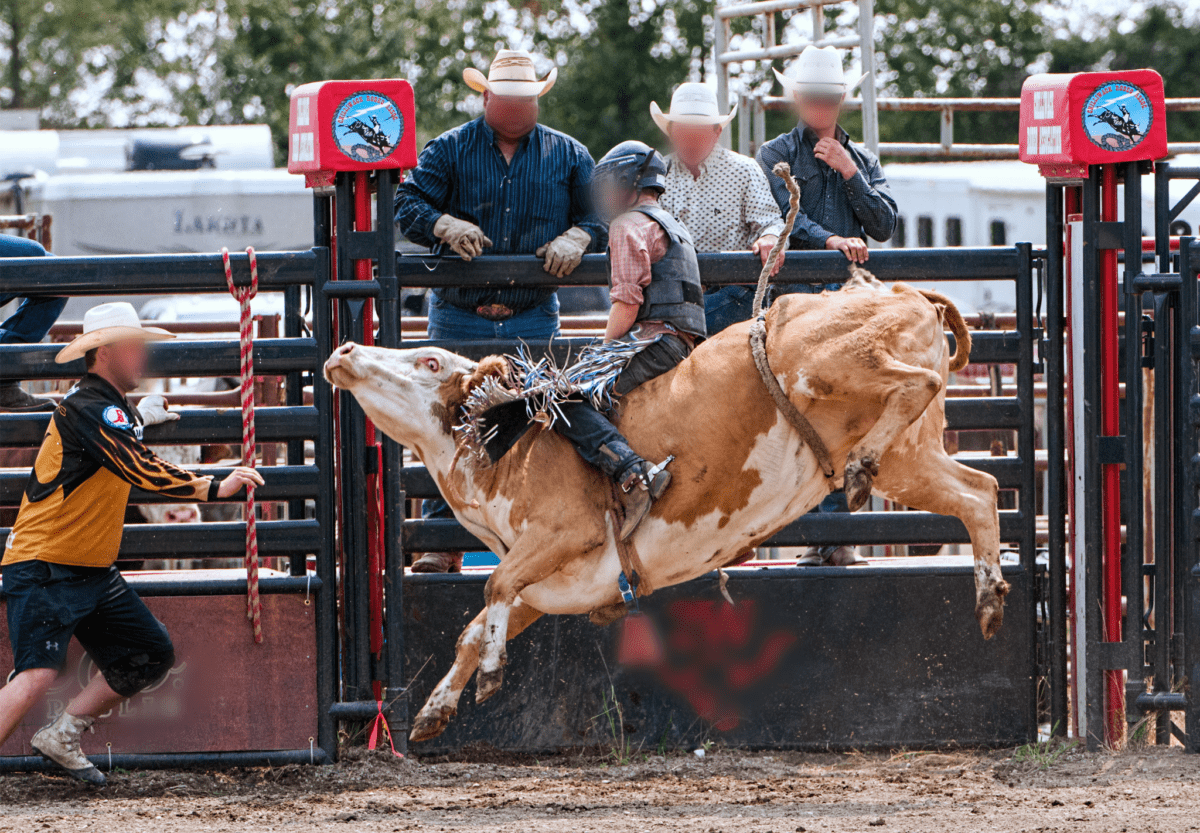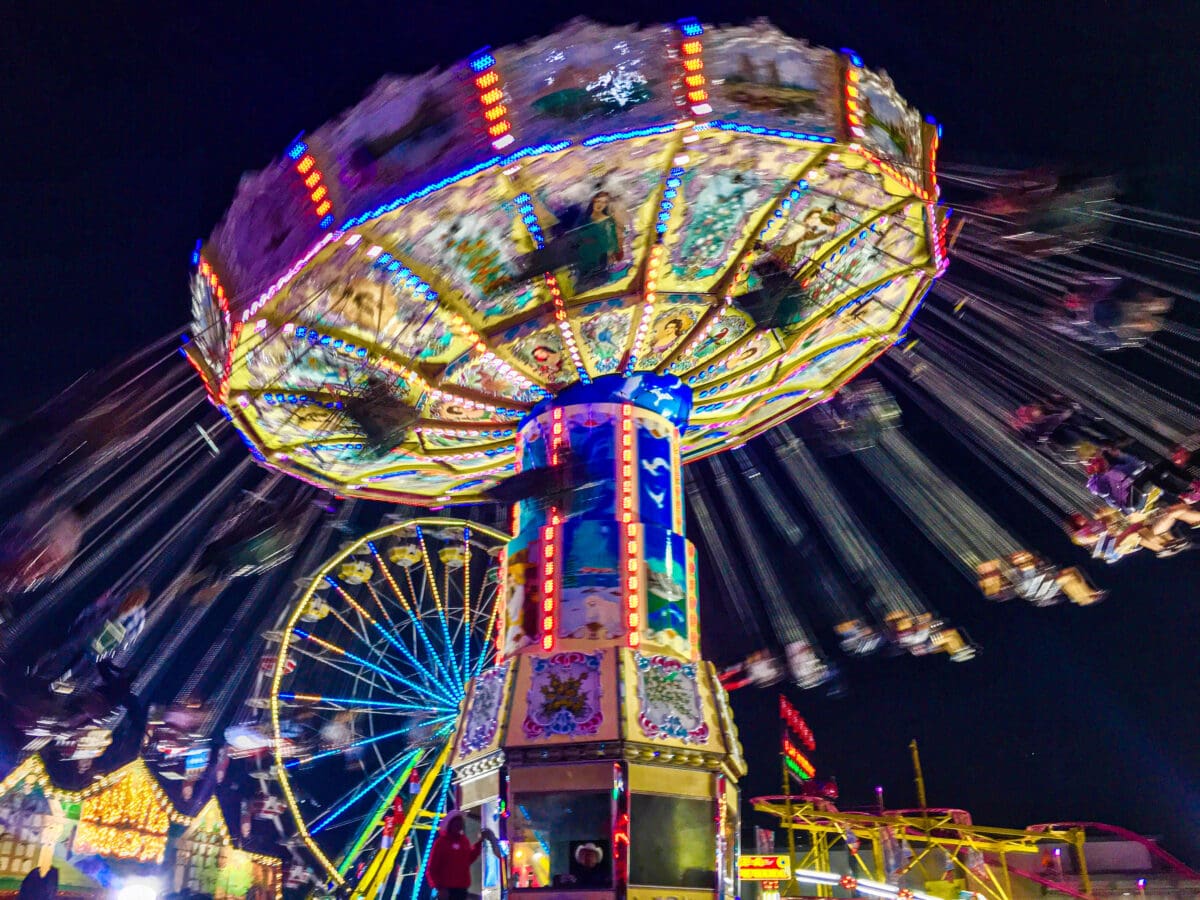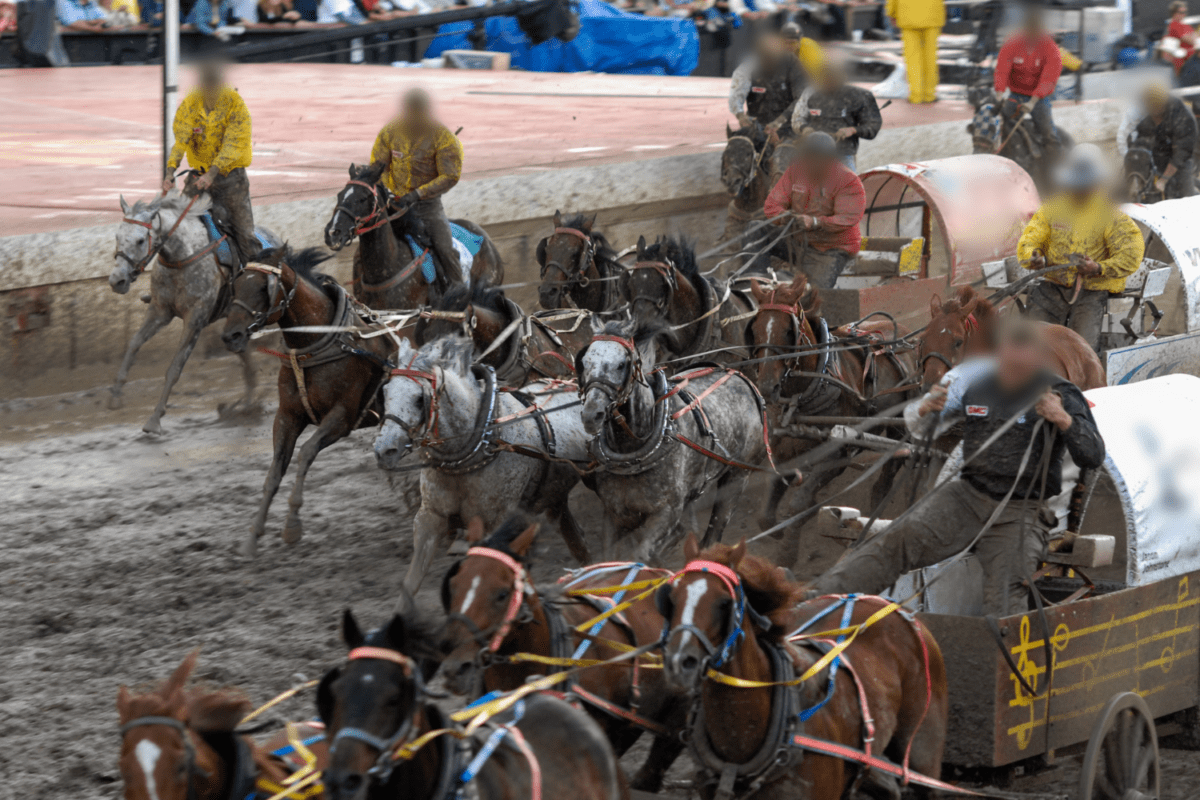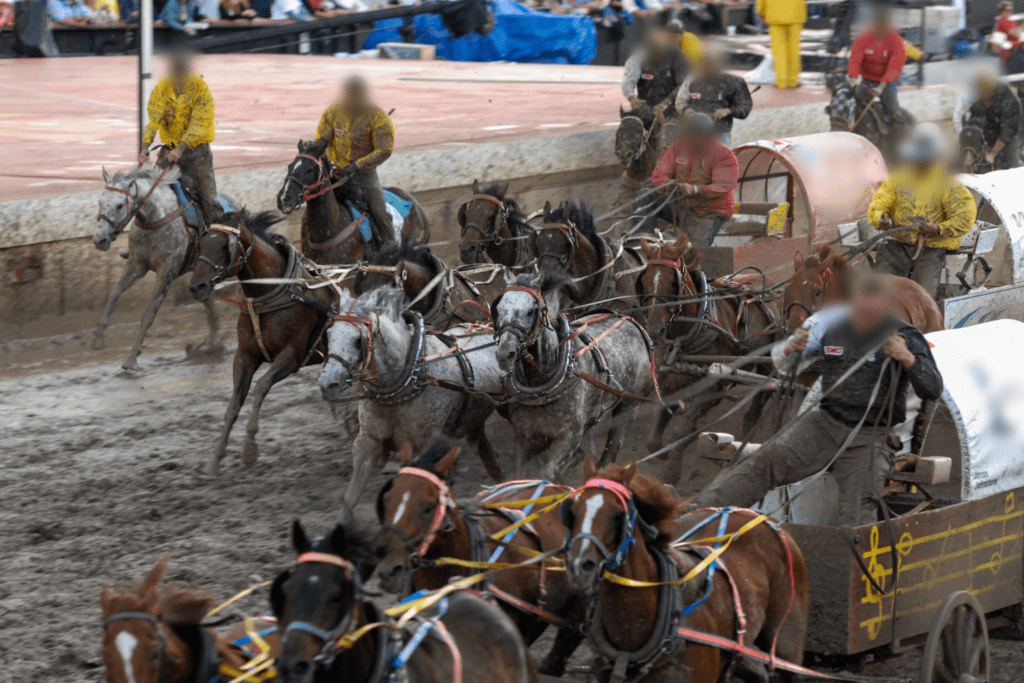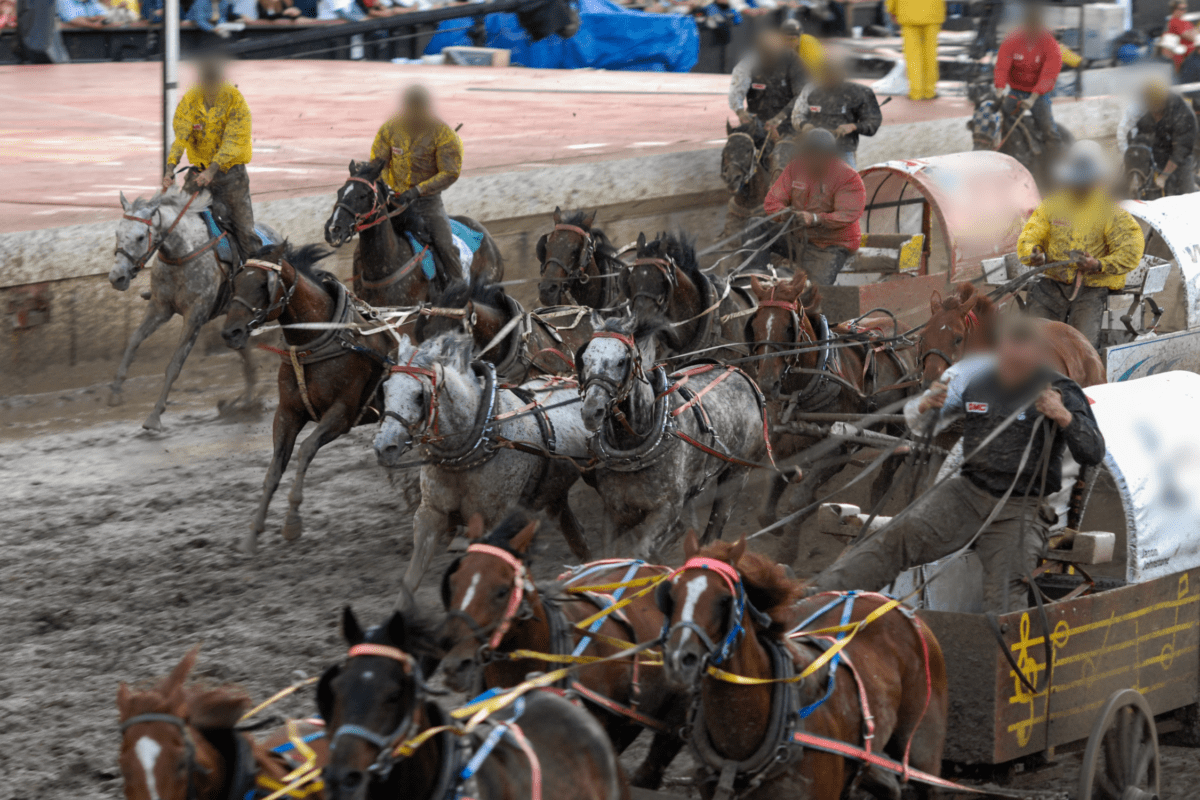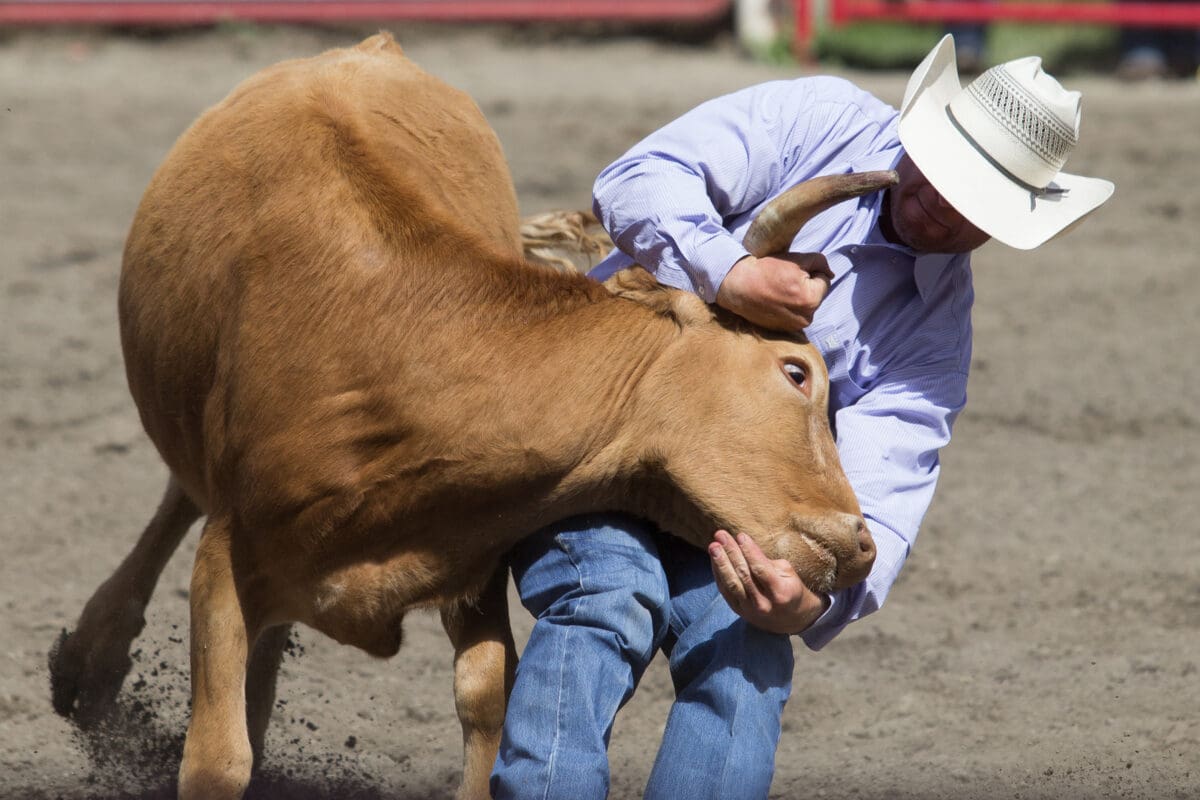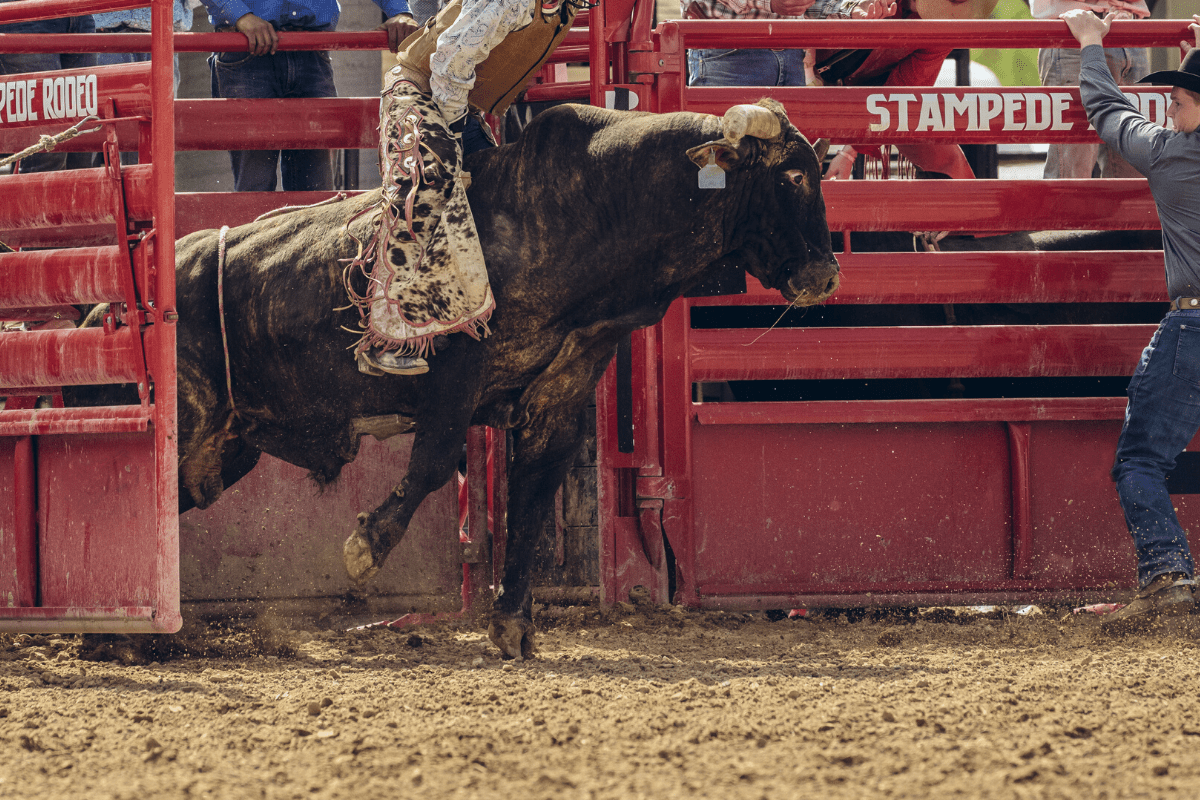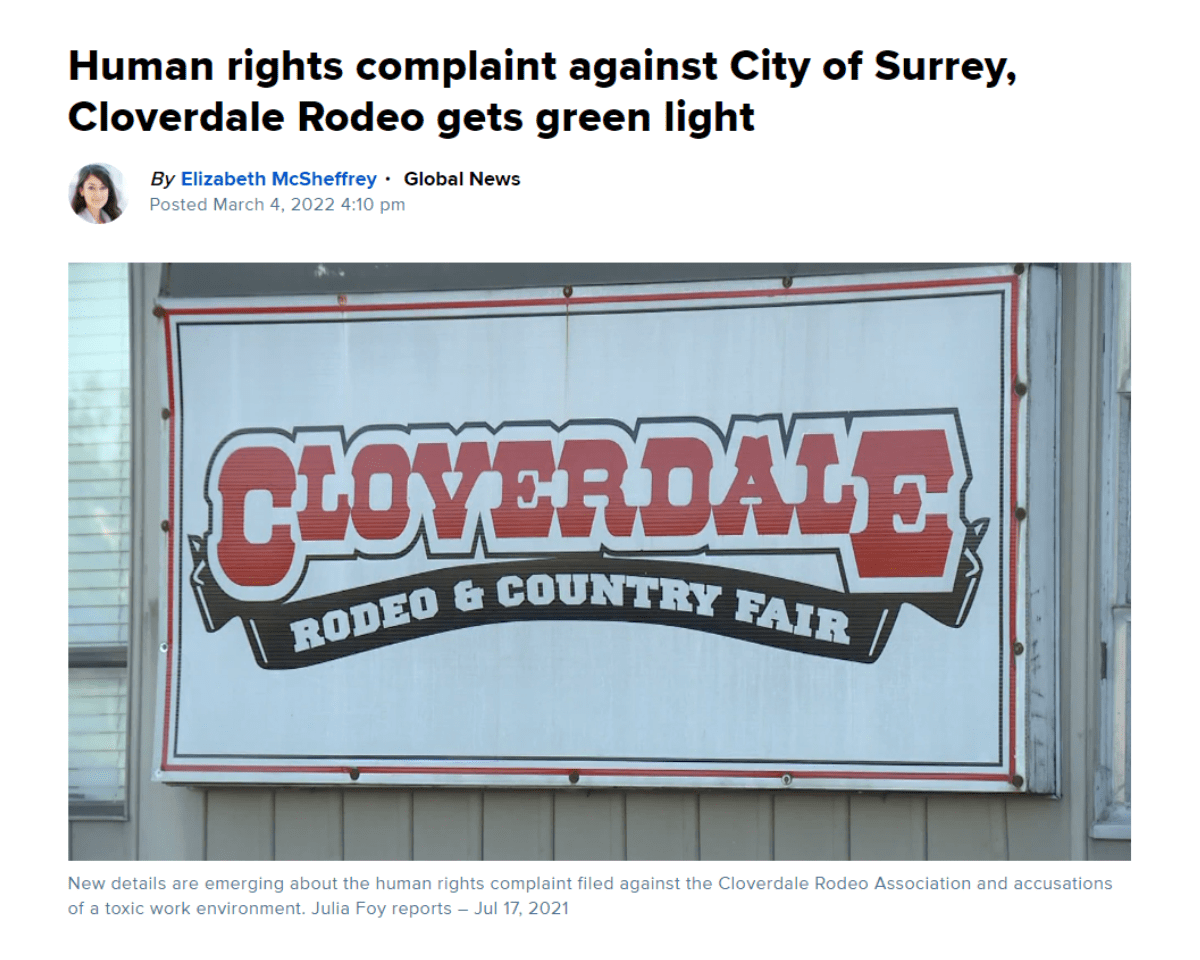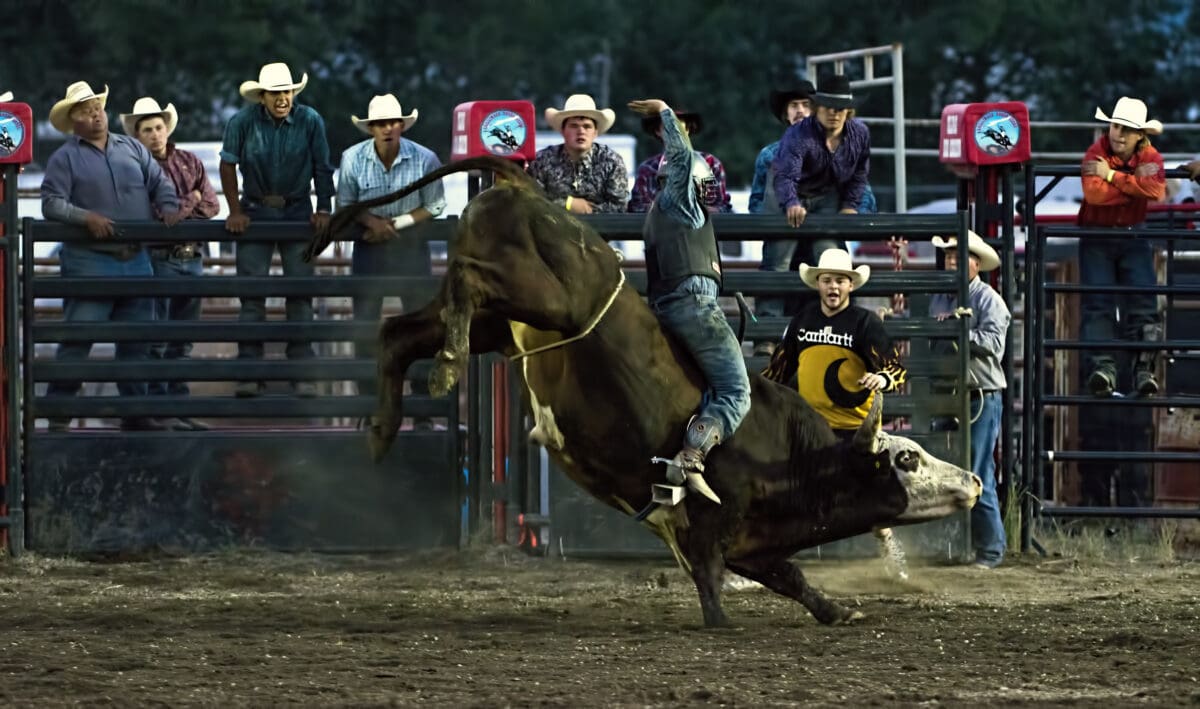VANCOUVER, October 5, 2022 – The Vancouver Humane Society (VHS) has released new footage from two B.C. rodeos held this summer and is raising concerns about the treatment of animals at the events.
The footage reveals recurring animal welfare issues, including stressed and frightened animals being roughly handed and deliberately agitated into “performing” for the public, at a controversial new rodeo that was held in Langley Township last month and from the Chilliwack rodeo in August.
The VHS points to clips that show calves, horses and bulls thrashing around in the chutes prior to being released into the rodeo arena. In two instances, horses in the chute can be seen stuck in unnatural and potentially dangerous positions, with one horse on their back and another with their leg stuck in the side of the chute.
Clips also show handlers pulling on the ears and tails of a number of animals; the VHS has long criticized these methods of deliberately agitating animals, which are frequently used in rodeo to goad the animal into bursting out of the chute at high speed or bucking wildly.
In a number of clips, animals that appear reluctant to move or leave the chute or arena are roughly handled. One clip shows a frightened sheep being shoved up onto their hind legs before falling onto their side. Another captures a sheep being dragged into the middle of the arena.
“The rodeo industry has long claimed that the animals used in rodeos love to perform. This footage, once again, proves otherwise,” VHS Campaign Director Emily Pickett notes. “If the animals love to perform, why is it necessary to twist their ears, drag them by their tails, and fasten uncomfortable straps around their sensitive underbelly to make them do so?”
Pickett also points out that these events put animals at risk of injury and death, all for the sake of public entertainment.
The VHS points to footage from the Chilliwack rodeo of a calf, who is being chased by a rider on horseback during a roping event, running into the arena fence at full speed; a bull repeatedly falling while being lassoed following a bucking event; and a horse who falls on their side during a bucking event and hits their head on the ground.
Another clip shows a bull fall and land on his horn, appearing to injure it. Afterward, the bull seems disoriented and is reluctant to move. Handlers proceed to pull and drag the bull by the tail, in an attempt to get the animal to leave the arena.
The VHS has been calling on organizers for both rodeos and local City Councils to remove inhumane rodeo events, including roping, bucking, wrestling and mutton busting, from the event programs.
“Recent polling from Research Co. shows that the majority of British Columbians are opposed to the use of animals in rodeos. Meanwhile, more and more communities have moved away from rodeos and toward events like fairs,” says Pickett.
With the upcoming local elections, the VHS is hoping that candidates for Mayor and Council will consider the many alternatives for bringing the community together without the use of rodeo events that cause unnecessary fear and suffering to animals for the sake of public entertainment.
– ends –
SOURCE Vancouver Humane Society
For more information, contact Emily Pickett: 604-416-2903, emily@vancouverhumanesociety.bc.ca
Related links:
https://drive.google.com/drive/folders/1uTUDd2ErUn_4an3Geq7biJ_BxmB4OEzr?usp=sharing

